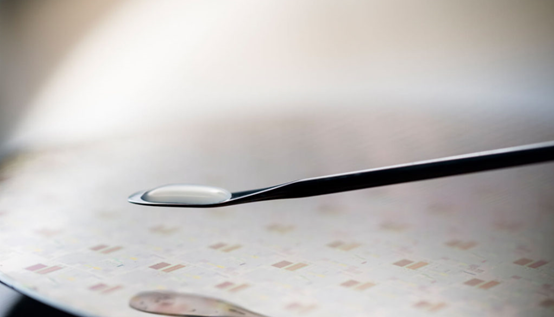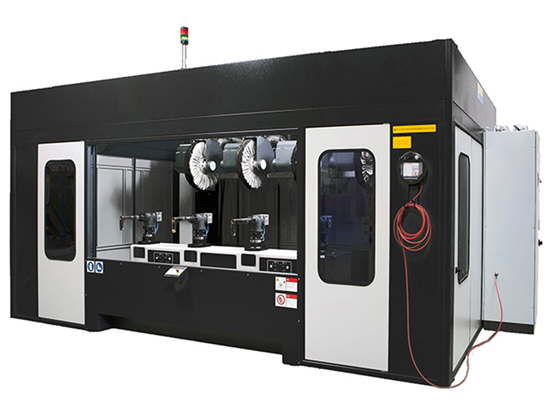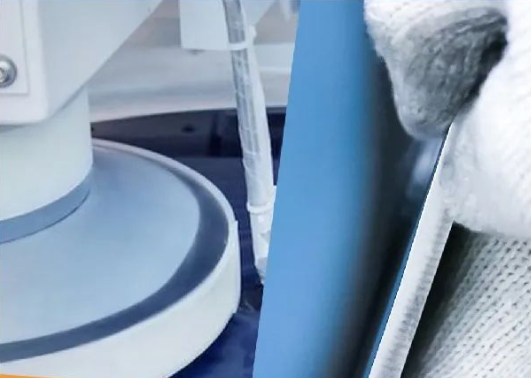
This article is also available in the following languages:
Tiếng Việt
繁體中文
Wafers are the foundation of semiconductors, and semiconductor integrated circuit is created by creating multiple identical circuits on a thin substrate of a wafer.
Currently, most integrated circuit components use multilayer 3D wiring. The front-end process of IC fabrication requires multi-layer cycling, and therefore it is necessary to ensure flatness of the wafer surface.
However, the surface of the freshly cut wafers is defective and rough, which can affect the accuracy of the circuit, and thus it needs to be further processed by the CMP process. That is, a polishing slurry and CMP equipment are used to grind the surface of the wafer until it is smooth. Each wafer undergoes several or even dozens of CMP wafer polishing processes during production.
Why is CMP a key process in wafer fabrication?
CMP, whose full name is Chemical-Mechanical Planarization, is a key technology for realizing surface planarization in wafers during the fabrication of integrated circuits.

The wafer fabrication process consists of seven separate processes: lithography, etching, film growth, diffusion, ion implantation, chemical mechanical polishing, and metallization.
As one of the key processes in wafer fabrication, chemical-mechanical polishing refers to
the coordination and cooperation of chemical corrosion and mechanical grinding enables efficient removal of excess material from the wafer surface and global nanoscale planarization.
CMP operation principle

Through the CMP device, a polishing head is used to press the wafer down on a polishing pad. At the same time, the polishing slurry (grinding fluid) is added. The throwing disc will then drive the polishing pad to rotate, and particles in the slurry will rub together with the rough polishing pad, resulting in global flattening.

CMP main consumables
1.Polishing slurry (grinding fluid)
The selection of polishing slurry should pay attention to the following factors: impurity purity of suspension, size of silica particles, hardness and uniformity of silica particles, whether the slurry will precipitate crystallization during Lapping operation, which will affect wafer quality, surfactant selection and proportion, PH adjustment, oxidant selection and proportion, and so on.
Such as SIO2, NH4OH, ORGANNIC COMPOUND, H2O.

2.Grinding pads
(1)The grinding fluid should be able to have good retention on the grinding pad to maintain a high efficiency polishing effect.
(2)The surface of the grinding pad has the proper hardness to ensure a good grinding effect.
(3)The polishing pad has good softness and can be deformed as the chip bends to ensure better uniformity.
(4)Grinding can be produced by the “by-product” discharge, making the grinding reproducibility better.
(5)Reduce impurities in the grinding pad material for good cleaning results.

CMP equipment
The CMP device can measure the thickness of different materials and thicken in real-time through an end-point detection system to prevent excessive polishing.
Moreover, it has a polishing head capable of applying global pressure partition to realize ultra-precise and controllable unidirectional pressure on multiple annular regions of the wafer globally within a limited space, so as to adjust the pressure and control the wafer polishing morphology in response to the film thickness data measured by the polishing disc. The surface of the wafer is polished to ultra-high flatness.
For CMP devices, key indicators for their industrialization include process consistency, production efficiency, reliability, etc. The main detection parameters for CMP devices include the grinding rate, the uniformity of grinding, and the number of defects.

(1)Grinding rate: the total amount of materials on the wafer surface was grinding within a certain time period.
(2)Grinding uniformity is divided into intra-wafer uniformity and inter-wafer uniformity. Intra-wafer uniformity refers to the ratio between the standard variance and the grinding rate of a wafer. Inter-wafer uniformity refers to the consistency of the grinding rates of different wafers under the same conditions.
(3)Number of defects: For CMP, the major defects include surface particles, surface scratches and grinding residues, which will directly affect the end product yield.
Due to the operation principle of CMP equipment, in order to ensure the normal operation of CMP equipment, the polishing head, retaining ring, gas film, cleaning brush, diamond disc and other key consumables of the equipment will be rapidly deplete due to long-term friction, so it is necessary to maintain and update the equipment regularly.
CMP Retaining Ring
With the rapid development of semiconductor technology, manufacturers are increasing the diameters of wafers in order to increase the output of chips and reduce production costs.
The increase in diameter causes warping in the process. Wafers with a diameter of more than 150 mm, the edge will be “over grinding”. In order not to degrade the polish quality and wafer utilization, CMP retaining rings were generated.

The CMP retaining ring holds the wafer in place during the operation of the CMP equipment by pressing the polishing pad at the edge and the polishing pad below the wafer to the same height, effectively solving the problem of “over grinding” the edge.
Reference materials:
1.Xingli Huang, Northwestern Polytechnical University, The study of process parameters and wear model for chemical-mechanical polished retaining rings.
2.《CMP TRIBOLOGICAL STUDY OF CARRIER RING PLASTIC MATERIALS》,W.G.Easter,G. D. Willis,etc
With extensive experience in polishing techniques and years of practical experience in surface treatment of artifacts and testing procedures, processes, etc., our company is able to customize the best polishing solutions for different quality requirements.
If you would like to know more about the above CMP Wafer Grinding, please scan the QR code below and contact our customer service.





